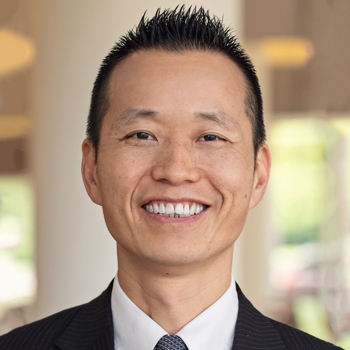Location
5144 Cardiovascular Center
1500 E Medical Center Drive
Ann Arbor, MI 48109-5864
Phone
(734) 647-9417
Primary Website
Research Interests
Basic Science Research: Dr. Yang’s current lab research focuses on the mechanisms of thoracic aortic aneurysms, which are largely unknown, especially in those with unknown mutations (such as bicuspid aortic valve), and developing novel therapies to prevent aortic aneurysms. He and his team generate patient-specific induced pluripotent stem cells (iPSCs) to model the thoracic aortic aneurysm in order to study the mechanisms of aneurysm formation in bicuspid aortic valve (BAV), Loeys-Dietz Syndrome, Marfan syndrome. CRISPR Cas 9 technology is used to create and correct the mutations causing thoracic aortic aneurysms in both control and patients’ iPSCs. This allows Dr. Yang and his team to study the biological mechanisms of gene mutations causing thoracic aortic aneurysms. He also collaborates with bioengineers to create tissue-engineered vascular grafts with patients’ iPSCs.
Clinically, He and his team work have focused on outcome research of aortic surgery and adult cardiac surgery. Such as valve-sparing aortic root replacement (David procedure) in acute type A dissection patients; Long-term outcome of valve-sparing aortic root replacement (David procedure); aortic root, arch, and malperfusion management in acute type A dissection patients; long-term outcome surgical treatment of active endocarditis.
Research Areas:
Bio-Micro Nanotechnology and Molecular Engineering, Biomechanics, Molecular and Cellular Biomechanics, Tissue Engineering and Biomaterials, Tissue Engineering and Regenerative Medicine
Additional Title(s)
- J. Maxwell Chamberlain, M.D. Collegiate Professor, Cardiac Surgery
Awards
Dr. Yang has won numerous research awards: such as AHA Vivien Thomas Young Investigator Award, finalist; Young Investigator of Loeys-Dietz Syndrome Foundation, and several research projects supported by NIH grants.
